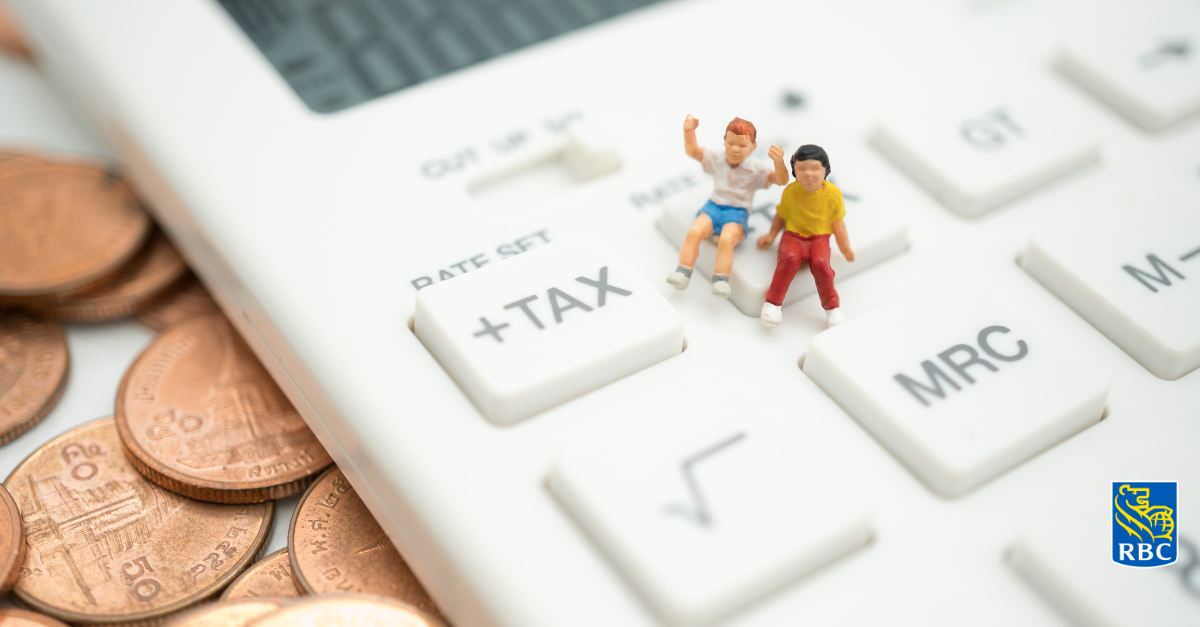Published July 14, 2023 • 6 Min Read
If you plan on raising a child in Canada, there’s a lot to consider — including finances. While finances may not be top of mind, it’s worth knowing the kind of expenses you’ll face so you can be prepared for this next phase of life.
According to several published estimates, raising a child in Canada costs between $10,000 – $15,000 per year. Of course, the costs vary depending on where you live, your lifestyle and the number of children you have, but the broad costs remain the same.
Here’s a rundown of what makes up the cost of raising a child in Canada and ways to bring it down when possible.
Startup costs
When you bring your child home for the first time, you’ll need to have some gear on hand: a car seat, crib, stroller, high chair, and robust supply of diapers (which typically cost Canadian families in the range of $500 – $1,000 per year). Some of these items will need to be swapped out as your child grows, so it’s important to budget for your initial expenses and the next stage.
While buying second-hand car seats and crib mattresses is generally not recommended, there are many high-quality resale strollers, chairs and swings in consignment shops and online.
Food
When your child is a baby, your food costs may not change much. But as they grow, so do food costs — and when they become teenagers, you may be amazed at just how much they can eat.
Preparing food at home is considerably more economical than dining out or ordering in — as convenient as food delivery has become, it can quickly eat away on a budget. To help keep your food costs down, planning your meals, making grocery lists, and sticking to them while in the store is a good idea.
Clothing
As a parent, you’ll buy clothes for your kids fairly consistently. They outgrow items almost monthly as babies — and while the rate of replacing outgrown clothes will slow, the price per item will increase over time. When you hit the teenage years, and your kids are the size of adults (and develop favourite brands and trends), clothing costs can get pretty high.
While your children are young, it’s worth seeking out quality hand-me-downs or second-hand stores (your toddler won’t care if they’re in a used t-shirt). You may even be able to gift or re-sell their clothes when your child outgrows them. A neighbourhood hand-me-down system may also work well, particularly if you know a few families with kids of varying ages. It’s a great way to cut costs, especially for those big items like winter coats and boots!
Childcare
If neither parent is able to stay at home, childcare may be your largest single expense, particularly in the years before your child reaches Kindergarten. Costs will vary depending on where you live and whether you can access a daycare enrolled in Canada’s national childcare program. The program, which provides $30 billion in federal funding to provincial and territorial governments, aims to provide affordable childcare to families for an average of $10/day by 2026. If your child attends a participating facility before that date, you will be eligible to receive a 50 per cent rebate of childcare fees.
Did you know: Quebec already offers $10/day childcare thanks to the government subsidy in place since 1997.
As you research childcare facilities, find out if they’re enrolled in the program and how it works. If childcare costs remain a financial strain, there are other options available: See if you can share babysitting with another family, ask if your parents or in-laws are willing to step in for a period of time or consider a nanny (this may be more economical with two or more children at home). Live-in caregivers tend to have a lower hourly rate than others, but you need the space and willingness to house another adult in your home.
Remember you can claim childcare expenses on your tax returns, so be sure to ask for a receipt whatever choice you make.
School expenses
Because the government doesn’t fund them, the cost of private schools across Canada varies depending on the type of school and the province. While you’ll pay the tuition out of pocket, some private schools do offer financial aid.
If you go the public school route in Canada, your education costs are covered until the end of Grade 12. There are, however, costs for school supplies, field trips and activities. To save on supplies, consider buying in bulk during a sale and set aside any excess for the next year.
Extracurricular activities
Between swimming lessons, sports teams, art classes and dance lessons, there are many ways a parent can spend money on extracurricular activities for their child. These costs can add up, particularly if your child’s aptitude requires elite training and instruction. If you want to keep costs down, seek local options — such as the neighbourhood piano teacher or talented art student.
Summer camps are also an important consideration for the budget — and the options are seemingly endless. Look for community-based programming and camps with great reviews and lower costs.
Activities and camps may be tax-deductible, so remember to include these expenses come tax time.
Post-secondary education
It’s no secret the cost of college and university in Canada is expensive. And while you may not be thinking this far ahead when your child first comes home, they’ll be a teen in no time and looking ahead to life after public school. With tuition at approximately $6,000 per year for Canadian schools (plus living expenses, books, etc.), it’s a cost worth planning for well in advance.
A Registered Education Savings Plan (RESP) is a smart way to save for your child’s education. Through the Canadian Education Savings Grant, the government matches 20 per cent of the first $2,500 you save yearly in an RESP to a maximum of $500 per year and a lifetime maximum benefit of $7,200 per child. Contributions aren’t tax-deductible, but any gains would be taxable under your child when they’re withdrawn. Since your child likely won’t have much income when they access the funds, the gains are usually tax-free.
Lower-income families may be eligible for a higher match and may access up to $2,000 to help start their child’s RESP through the Canada Learning Bond.
Starting a family is an incredibly exciting time, but it doesn’t come without its share of anxieties. The financial side of having a child can be stressful — but with the right planning, a few tricks up your sleeve and a strong community you can rely on, you can keep the costs down.
This article is intended as general information only and is not to be relied upon as constituting legal, financial or other professional advice. A professional advisor should be consulted regarding your specific situation. Information presented is believed to be factual and up-to-date but we do not guarantee its accuracy and it should not be regarded as a complete analysis of the subjects discussed. All expressions of opinion reflect the judgment of the authors as of the date of publication and are subject to change. No endorsement of any third parties or their advice, opinions, information, products or services is expressly given or implied by Royal Bank of Canada or any of its affiliates.
Share This Article






